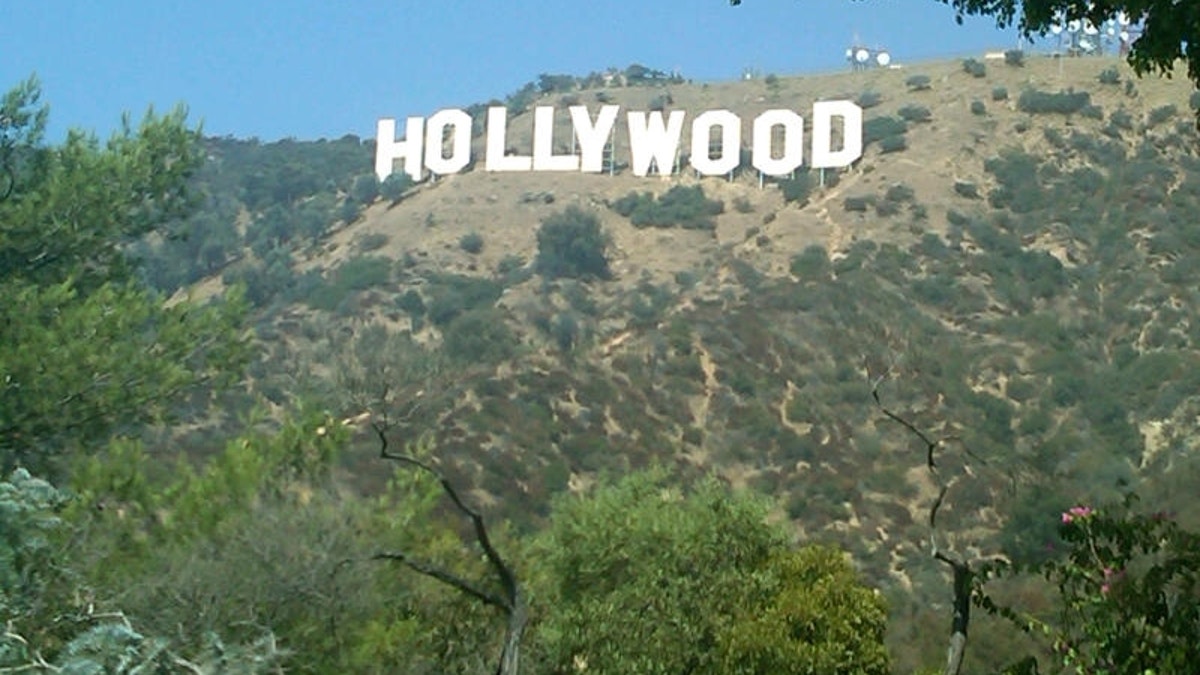
It's neighbor versus neighbor in a fight over controlling tourists who too often ignore local ordinances while snapping photos of the iconic "Hollywood" sign that sits atop the hill overlooking one of the poshest communities in the country.
Since the sign went up nearly 90 years ago, millions of tourists have come to the Hollywood Hills neighborhood for a better look at the 30 x 50 foot letters.
Some locals enjoy sharing the views with the daily flow of visitors who hail from all over the globe. Others want to keep sightseers away from the most popular viewing areas. But all who live here agree that something needs to be done to keep tourists from clogging the tight neighborhood streets and leaving behind cigarette butts that could spark wildfires on dried-out hillsides--an ever present concern for this area as past fires have come close to both homes and the historic letters.
"They park in the middle of the street and they take pictures and you guys are derelict in your duty," one resident said at a community meeting while pointing an accusatory finger to law enforcement officers responsible for patrolling the area. Illegally parked cars and smokers who are oblivious of or indifferent to the posted "no smoking" signs were common complaints.
The president of the Hollywoodland Homeowners Association has been outspoken against the posting of signs directing tourists away from the closest viewing points in the neighborhood to a centralized area with more parking.
"To encourage even more tourist traffic into our area at a time when the fire department and the LAPD are stretched so thin is not just ill-advised, it's reckless," Sarajane Schwartz said. She's pushing for an official viewing site that's entirely out of the neighborhood. Other proposals included the creation of a tram to ferry people to the top of Mt. Lee where the sign stands or erecting gates to keep cars and tour busses from driving up the narrow streets that wind up the hill.
Most of the residents blame technology, especially global positioning devices, for a recent uptick in a seemingly never-ending parade of cars with out-of-state tags, rentals and commercial passenger vans. The increasingly popular devices don't require an exact address for tourists to find their way. They can simply hit a few buttons searching for the Hollywood sign to make their way.
"You can't stop the internet. People are still going to come to the area," one man said at the town hall meeting where more than 100 homeowners and community leaders met to air grievances and offer solutions.
Others don't seem to mind the traffic as much. "I love the fact that there are people who come from all over the world to my neighborhood and I can see them every day when I walk out of my doorsteps."
On a recent weekday afternoon Keith Walker and his daughter Sarah came to a spot at the end of a street favored for its views of the sign. "The GPS took us two miles away but we could still see the sign," the elder Walker said then noted how they decided to get closer anyway by figuring their way through the maze of winding streets.
"It looks kind of small," Sarah Walker observed. "I bet it looks bigger if you can get closer."
Indeed, at the end of the street is a hiking trail with various warning signs that many apparently ignore. There's even a website dedicated to helping people navigate the trail and offers pictures and video clips showing what people can see. Walker moved from Pennsylvania four months ago and said she'd definitely want to come back and explore the area some more.
Nothing was settled at the community meeting, which was organized by Los Angeles Councilman Tom LaBonge, but everyone was in agreement that something needs to be done soon. "You got a great neighborhood. You have a challenge right now. You don't want to have a tag on your neighborhood that you're not great," LaBonge cautioned. "Because the values of your homes will have an effect on that."

